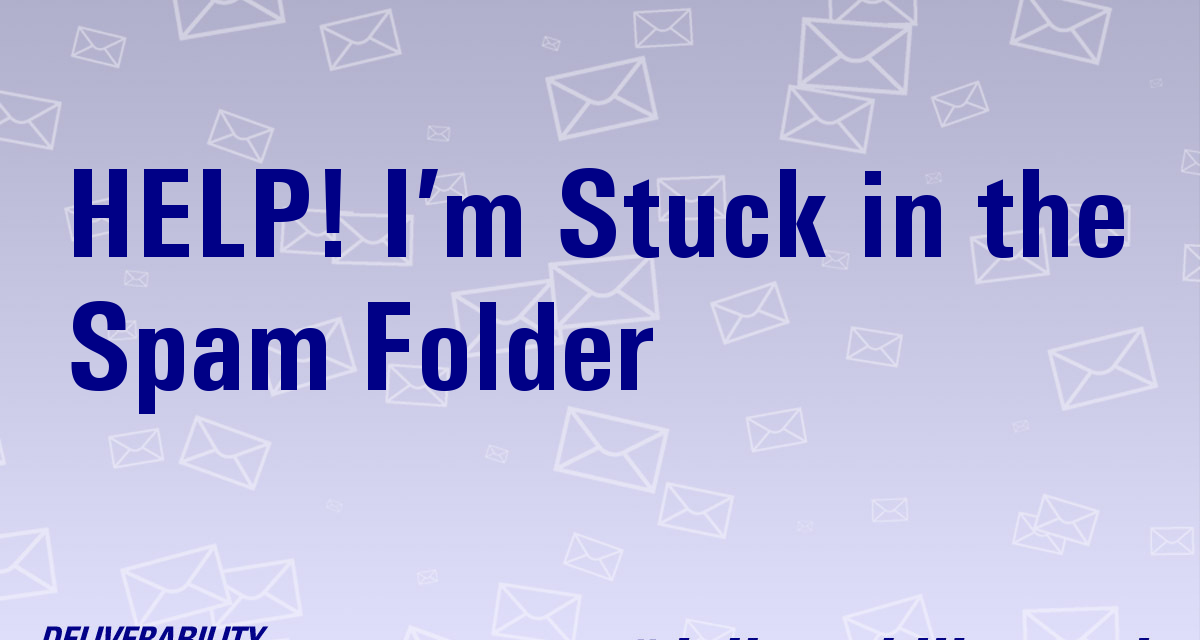Is the spam folder swallowing your emails whole? It’s a frustrating situation that many businesses and marketers encounter. Despite your best efforts to craft engaging content and deliver valuable information, finding your emails marked as spam can be disheartening and detrimental to your email efforts. Lets look at a few thing to help you course correct and get back into the mailbox providers good graces, and the inbox.
Identify the Cause
First, identify the root cause of your spam folder placements. Start by reading your Mailbox Provider’s (MBP) postmaster page to ensure your mailing practices align with their guidelines for sending bulk mail. These pages typically provide detailed instructions on sending emails, authentication policies, interpreting bounce messages, the types of blocklists or reputation services used, and how to open a support case with the postmaster team. Understanding these guidelines is crucial as they provide the foundation for good email practices.
Adjust Your Practices
Once you’ve familiarized yourself with the postmaster guidelines, you might need to adjust some of your email practices. Begin by looking at your data practices, where are your subscribers coming from, are they giving an informed consent, are your delivering what they are asking got. Then take that information and start refining your audience segmentation in 4 groups; targeting your most engaged users first. This means identifying which subscribers are actively interacting with your emails and focusing your efforts on this group. Building segments of your most engaged users and sending to them first gives a positive push to your domains reputation, sending to your recently engaged users second and looking at your recently unengaged users third. Completely suppress your unengaged users if you are having delivery issues.
Segments; Highly engaged (under 30 days since last activity), recently engaged (31 to 60 days engaged), recently unengaged (61-120 days), and totally unengaged (121+ days).
For win-back campaigns, consider tweaking the timing and content to make them more appealing and relevant to your audience. Re-evaluating the window of time you use to define an engaged user is also essential; a shorter engagement period might give you a clearer picture of who is truly interested in your content. Set this as an automation so that individuals will drip out of your email program and it’s not a big shock once or twice a year.
Implement New Solutions and Tactics
There are several strategies you can implement to address spam folder placements. One of the most effective methods is suppressing unengaged users. Removing inactive subscribers from your mailing list can significantly improve your engagement rates and reduce the chances of your emails being marked as spam.
Review your content and consider refreshing the content to ensure it is relevant, personalized, and compliant with best practices can also make a big difference.
Review your data acquisition practices to ensure you are using opt-in methods to collect email addresses. This ensures that your list is comprised of individuals who genuinely want to hear from you.
Resolving any blocklist issues is another critical step. Regularly check if your domain or IP is on any blocklists and follow the necessary steps to get delisted. Implementing good list hygiene practices is also essential. This means regularly cleaning your email list to remove invalid or outdated addresses, which can help improve your deliverability rates.
Essential Postmaster Pages to Read
Even if you’re not currently experiencing delivery issues, it’s a good idea to familiarize yourself with the following resources. Gmail’s Sender Best Practices, Yahoo’s Senders Hub, and Outlook’s Postmaster pages provide valuable insights into maintaining good email practices. These resources offer guidelines and tips that can help you avoid common pitfalls and ensure your emails are delivered successfully.
Open a Support Ticket
After ensuring your emails comply with MBP guidelines, the next step is to open a support ticket with the postmaster team. Always follow their process for opening a support ticket, as this will give you the best chance of resolving any issues promptly. The postmaster team can provide specific advice and assistance tailored to your situation, helping you get your emails back on track. For this part its best to engage your ESP’s deliverability consulting team or a third part delivery consulting company, such as Email Industries.
Building a Positive Reputation
Finally, remember that building a positive reputation is a journey. Occasionally, you may encounter delivery issues, but staying aligned with the best practices of MBPs and your Email Service Provider will help keep your emails out of the spam folder. It’s important to be patient and consistent in your efforts. Over time, these best practices will help you build a strong sender reputation, ensuring your emails reach your audience effectively.
Getting into the spam folder is significantly easier than getting out. Navigating spam folder placements requires a proactive approach rooted in understanding, adjustment, and implementation. By aligning your email practices with MBP guidelines, refining audience segmentation, maintaining list hygiene, and staying informed through postmaster resources, you can enhance your email deliverability and build a strong sender reputation. Remember, overcoming spam folder challenges is a journey of continuous improvement, but with persistence and adherence to best practices, you’ll ensure that your valuable messages reach your audience’s inbox consistently.


